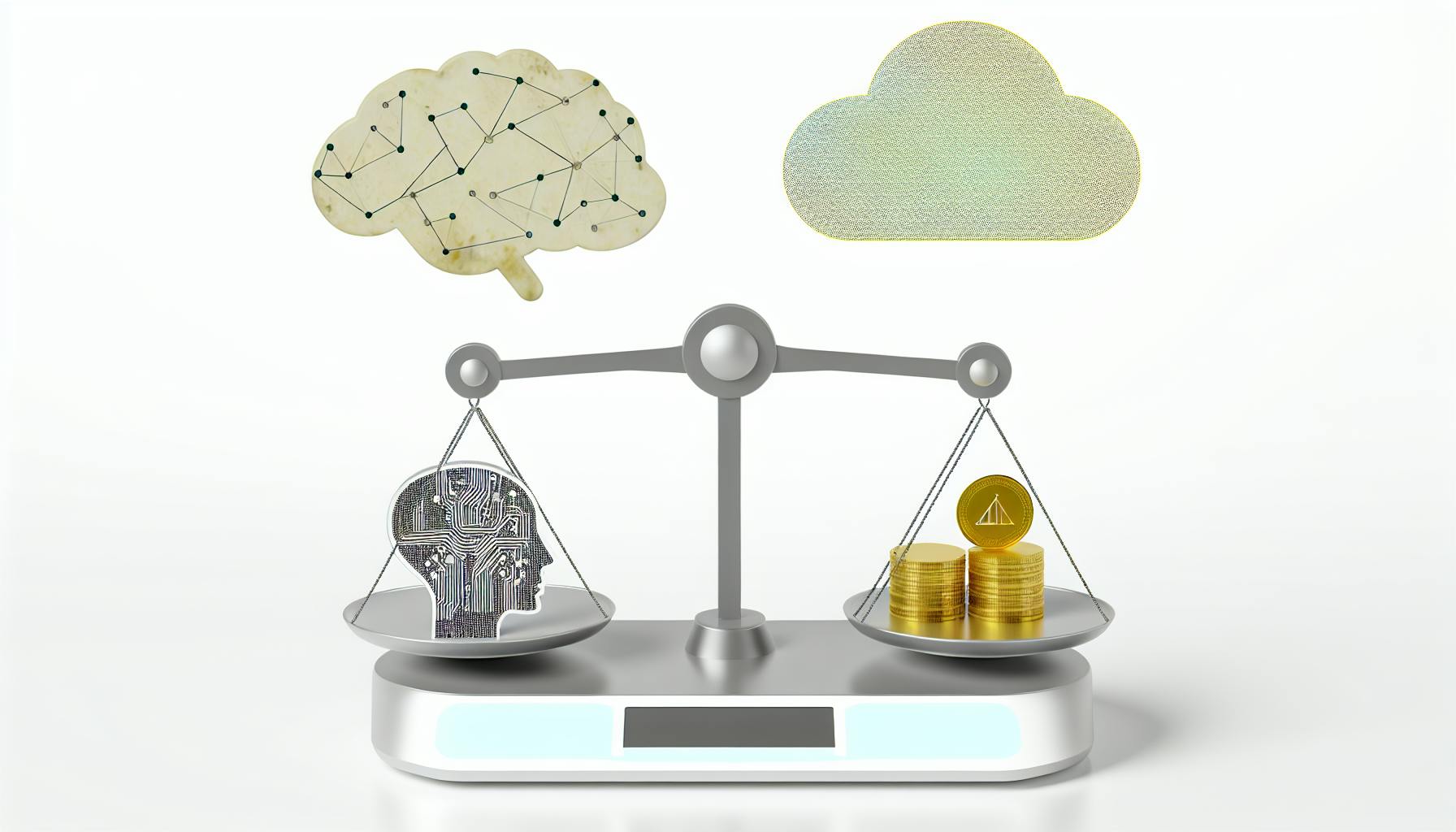Since 77% of employees feel disconnected from their workplace, organizations are discovering that career development isn't just a perk—it's a powerful catalyst for transformation. The intersection of professional growth and employee engagement represents one of the most significant opportunities for businesses to drive sustainable success.
Research shows that companies investing in robust career development programs experience up to 250% higher productivity and engagement rates compared to those that don't. This compelling connection between professional growth and workplace satisfaction is reshaping how forward-thinking organizations approach talent management and retention strategies.
The Significance of Employee Engagement
Employee engagement represents the mental and emotional connection workers have with their jobs, teams, and workplace - a critical factor that drives organizational success. When employees are truly engaged, they demonstrate higher levels of involvement and enthusiasm, going beyond basic job requirements to contribute meaningfully to company objectives.
The impact of engagement on business outcomes is substantial. According to comprehensive analyses, organizations with highly engaged employees experience remarkable improvements across key metrics:
• 78% reduction in absenteeism
• 21% higher productivity in sales
• 23% increase in profitability
• 51% lower turnover in stable organizations
These statistics underscore a fundamental truth: engaged employees produce significantly better results than their disengaged counterparts. Yet, current global engagement rates reveal a concerning reality - only 23% of employees worldwide and 33% in the U.S. are actively engaged in their work.
The variance between high and low engagement environments is stark. Engaged employees typically seek professional growth opportunities, take pride in their work environment, and willingly contribute to organizational success. In contrast, disengaged workers tend to perform at minimal levels, showing little interest in skill development or going above basic requirements.
For organizations aiming to thrive in today's competitive landscape, fostering employee engagement isn't optional - it's essential for sustainable success and growth.
Career Development: A Cornerstone of Employee Success
Understanding Career Development in Modern Organizations
Career development encompasses the structured approach organizations take to foster employee growth, skill enhancement, and professional advancement. It goes beyond traditional training programs, representing a comprehensive framework that aligns individual aspirations with organizational objectives.
Key Components of Effective Development
Organizations implement various dimensions to support employee growth:
• Structured training programs that enhance technical and soft skills
• Mentorship opportunities pairing experienced leaders with emerging talent
• Cross-functional assignments enabling broad skill acquisition
• Professional certification support and continuing education
• Regular performance discussions focused on growth opportunities
These elements work together to create a robust development ecosystem where employees can visualize and pursue clear career paths within the organization. When implemented effectively, career development initiatives transform into powerful engagement drivers, encouraging employees to invest in their future with the company.
The impact of strong career development programs extends beyond individual growth. Companies that prioritize development opportunities see significant improvements in retention rates, employee satisfaction, and overall workforce capabilities. By connecting personal career goals with organizational success, businesses create an environment where both entities thrive together, fostering lasting engagement and commitment.
How Career Development Contributes to Employee Engagement
Empowerment Through Professional Growth
When organizations invest in career development initiatives, they create a powerful catalyst for employee engagement. Through structured learning opportunities and skill enhancement programs, employees gain confidence in their abilities and develop a stronger connection to their work. This empowerment leads to increased job satisfaction and a deeper sense of purpose within the organization.
Impact on Performance and Motivation
Career development directly influences workplace motivation and productivity. Employees who know expectations demonstrate higher levels of commitment and performance. Studies show that organizations offering robust development opportunities experience up to 30% higher productivity levels and significantly improved retention rates.
Creating a Culture of Continuous Learning
A strong focus on career development fosters an environment where continuous learning becomes part of the organizational DNA. This culture encourages employees to:
• Take ownership of their professional journey
• Actively seek new challenges and responsibilities
• Share knowledge with colleagues
• Contribute innovative ideas to organizational growth
The relationship between career advancement opportunities and engagement is particularly evident in key performance indicators. Teams who conduct engagement studies show 56% higher performance rates and demonstrate stronger organizational commitment. Additionally, employees who feel supported in their career growth are three times more likely to report high levels of job satisfaction compared to those without development opportunities.
Career Development Strategies
Mentorship and Coaching Programs
A robust mentorship program serves as a cornerstone of effective career development. When experienced leaders guide emerging talent, both parties benefit from knowledge transfer and fresh perspectives. Successful mentorship initiatives typically include structured meeting schedules, defined learning objectives, and regular progress assessments.
Cross-Training Opportunities
Organizations that implement strategic cross-training programs enable employees to expand their skill sets while maintaining engagement. By rotating team members through different roles and departments, companies create versatile professionals capable of contributing across multiple areas. This approach not only enhances individual capabilities but also strengthens organizational resilience.
Professional Development Resources
Modern career development requires a multi-faceted approach to learning and growth. Essential elements include:
• Access to industry-specific certification programs
• Online learning platforms for self-paced development
• Workshop participation and conference attendance
• Skill-based training modules aligned with career goals
Career Path Mapping
Career path mapping involve creating clear progression routes that align individual aspirations with organizational needs. This includes:
• Regular career planning sessions with managers
• Documented skill requirements for advancement
• Milestone achievements and competency tracking
• Flexible pathways accommodating various career interests
These strategic approaches to career development foster an environment where employees can visualize their future within the organization while acquiring the skills needed for advancement. When combined with regular feedback and support, these initiatives significantly enhance engagement and retention rates.
Benefits of Career Development for Employees
Enhanced Professional Confidence
Career development initiatives significantly boost employee confidence and workplace effectiveness. As individuals acquire new skills and master their roles, they demonstrate increased willingness to take on challenging projects and contribute innovative solutions. This heightened self-assurance translates directly into improved performance, with employees showing up to 23% greater productivity in their daily tasks.
Advancement Opportunities
Structured development programs create clear pathways for promotion and career progression. Employees who participate in targeted skill enhancement initiatives are 3.5 times more likely to secure internal promotions compared to those who don't. This vertical mobility not only provides tangible rewards but also strengthens organizational commitment.
Personal Growth and Achievement
Beyond professional advancement, career development fulfills fundamental human needs for growth and accomplishment. When employees engage in continuous learning opportunities, they experience:
• Increased job satisfaction
• Stronger sense of purpose
• Enhanced work-life integration
• Greater workplace autonomy
• Improved problem-solving abilities
Motivation and Engagement Connection
The link between career development and workplace motivation is substantial. Organizations that prioritize employee growth see engagement scores increase by up to 56%. This elevated engagement manifests in multiple ways:
• Higher quality work output
• Increased initiative in projects
• Stronger team collaboration
• Enhanced customer service
• Greater innovation contributions
These benefits create a positive feedback loop, where personal development drives engagement, which in turn fuels further growth and achievement.
Benefits of Career Development for Employers
Enhanced Business Performance
Organizations that invest in career development programs experience measurable improvements in business outcomes. Companies with comprehensive development initiatives see up to 17% higher productivity and 23% greater profitability compared to those without structured programs. These gains stem from employees applying advanced skills and knowledge directly to their roles.
Competitive Advantage Through Talent
A strong career development strategy cultivates a versatile, skilled workforce, allowing organizations to adapt swiftly to market changes. By consistently enhancing employee capabilities, companies secure a lasting competitive edge through:
• Increased operational efficiency
• Faster problem-solving capabilities
• Enhanced customer service delivery
• Improved project management outcomes
Reduced Turnover and Associated Costs
Organizations prioritizing career development experience significantly lower turnover rates - up to 51% reduction in stable organizations. This translates to substantial cost savings, considering the average cost of replacing an employee ranges from 50% to 200% of their annual salary.
Innovation and Growth
Diverse skill sets fostered through development programs drive innovation and organizational growth. Companies like Microsoft and Google attribute their market leadership partly to extensive employee development initiatives, which have resulted in:
• New product developments
• Process improvements
• Enhanced customer solutions
• Streamlined operations
By investing in employee growth, organizations create a self-sustaining cycle of improvement, where enhanced capabilities drive better business outcomes, leading to increased resources for further development opportunities.
Successful Implementations in Organizations
Google's Career Development Framework
Google's "Grow" program exemplifies excellence in career development implementation. The initiative combines traditional learning paths with innovative approaches, including rotation programs and "20% time" for passion projects. This comprehensive strategy has resulted in an 87% retention rate among participating employees and contributed to Google consistently ranking among the best places to work.
Microsoft's Career Development Success
Microsoft's career development framework focuses on continuous learning through their "Growth Mindset" culture. Their development program includes:
- Personalized learning paths through Microsoft Learn
- Internal hackathons promoting innovation
- Cross-functional project opportunities
- Mentorship programs pairing veterans with newcomers
This strategy has led to a 34% increase in internal promotions and a 28% improvement in employee satisfaction scores.
Salesforce's Trailblazer Program
Salesforce's Trailblazer program demonstrates how gamification can enhance career development. The program offers:
• Customized learning paths
• Skill-based certifications
• Peer learning communities
• Recognition badges for achievements
Since implementation, Salesforce has seen:
• 45% increase in employee engagement
• 32% reduction in turnover
• 56% improvement in internal mobility rates
These success stories highlight how strategic career development initiatives create measurable business impact while fostering engaged, committed workforces. Organizations implementing similar programs consistently outperform industry averages in key metrics, including productivity, innovation, and employee retention.
Impact on Employee Motivation and Retention
Driving Sustained Engagement
Career development serves as a powerful catalyst for employee motivation, creating a direct correlation between growth opportunities and job satisfaction. When organizations invest in development programs, they experience up to 167% higher employee net promoter scores, indicating stronger workplace commitment and enthusiasm. This heightened engagement translates into measurable performance improvements, with developed employees showing 21% greater productivity compared to their peers.
The Retention Advantage
Organizations prioritizing career advancement opportunities experience significantly lower turnover rates. Studies demonstrate that companies with robust development programs reduce attrition by 50% compared to those without structured growth paths. This retention benefit delivers substantial cost savings, considering that replacing an employee typically costs between 1.5 to 2 times their annual salary.
Financial Impact
The financial advantages of strong retention through career development are compelling:
• 75% reduction in sick day usage
• $52 million potential annual savings for large organizations
• 56% increase in overall performance metrics
• 43% lower turnover in stable organizations
Beyond direct cost savings, [drivers of employee experience](https://www.qualtrics.com/experience-management/employee/drivers-of-employee-engagement/) demonstrate higher levels of discretionary effort, contributing to organizational success through increased innovation and customer satisfaction. They're also three times more likely to actively participate in workplace initiatives and mentor junior colleagues, creating a self-sustaining cycle of organizational development.
This commitment to growth opportunities fosters a culture of continuous improvement, where employees see their future aligned with the company's success. Organizations that maintain consistent development programs report 78% lower absenteeism and significantly higher levels of workplace belonging, creating a more resilient and productive workforce.
Actionable Takeaways for HR Leaders, CEOs, and Company Founders
Implementing Effective Career Development Programs
To maximize engagement through career development, organizations should establish structured implementation frameworks. This includes creating individualized development plans, setting clear progression metrics, and maintaining regular communication channels. Leaders should allocate 3-5% of payroll to development initiatives, ensuring adequate resources for sustained growth.
Essential Implementation Steps
Key actions for successful career development programs include:
• Conducting quarterly career planning sessions with each employee
• Establishing mentorship programs pairing senior leaders with emerging talent
• Creating skill matrices aligned with organizational objectives
• Implementing digital learning platforms for self-paced development
• Developing clear promotion criteria and internal job posting systems
Measuring Success and Impact
Track program effectiveness through:
• Monthly engagement surveys focusing on development satisfaction
• Quarterly reviews of internal promotion rates
• Assessment of skill acquisition and application
• Regular feedback collection from participants
• ROI calculations based on retention and productivity metrics
Best Practices for Sustainable Growth
Organizations should:
• Prioritize internal promotions, filling 70% of leadership positions from within
• Offer rotation programs across departments
• Provide dedicated learning time during work hours
• Create individualized development budgets
• Establish peer learning communities
By implementing these strategies, organizations typically see a 56% increase in employee performance and a 50% reduction in turnover risk. Success requires consistent leadership support, regular program evaluation, and adaptation based on employee feedback and organizational needs.
Building Tomorrow's Success Through Today's Development
The evidence is clear: career development serves as the cornerstone of employee engagement and organizational excellence. By implementing comprehensive growth initiatives, companies don't just enhance individual capabilities—they forge stronger connections between personal aspirations and corporate objectives, creating a workforce that's both highly skilled and deeply committed.
As the business landscape continues to evolve, organizations that prioritize career development will find themselves uniquely positioned to attract, retain, and nurture top talent. The investment in employee growth isn't merely about skill enhancement; it's about building a resilient, engaged, and high-performing workforce capable of driving sustainable success.
Struggling to engage and retain talent? MentorZone delivers personalized career roadmaps and skill-building plans that empower employees while driving engagement and reducing turnover. Discover how our AI-driven platform can help your organization thrive by aligning personal growth with company success.


